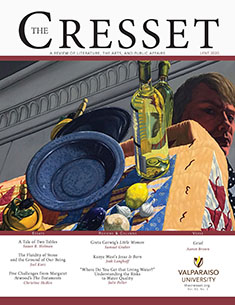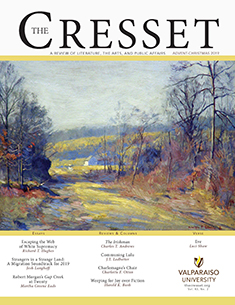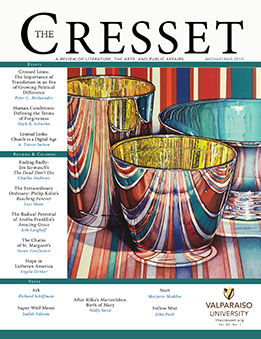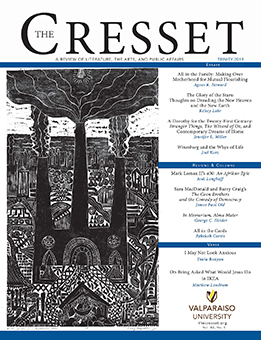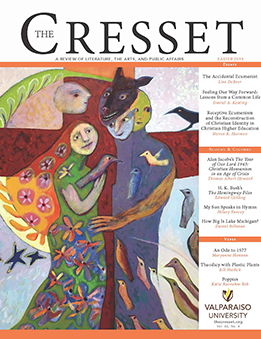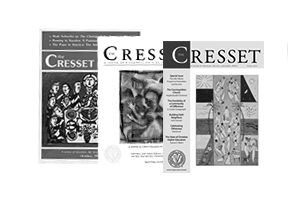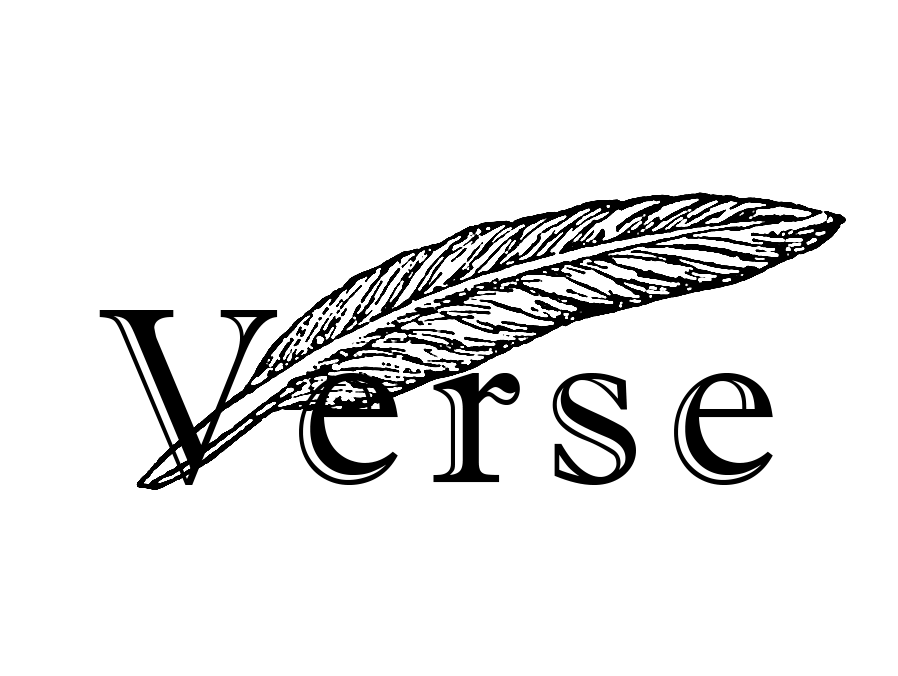Anne Tyler’s novel, The Accidental Tourist, chronicles a year in the life of Macon Leary. Leary is the author of a series of travel guides for businessmen whose idea of the best sort of trip would involve never leaving home. Leary’s guides seek to avoid the discombobulation of travel by maximizing familiarity and minimizing friction. Where can one find a solid bacon, egg, and toast breakfast? Which hotels are comfortingly consistent from visit to visit, from city to city? How should one pack and navigate so as to avoid unnecessary contact with unpredictable locals? As the narrator summarizes: “Other travelers hoped to discover distinctive local wines; Macon’s readers searched for pasteurized and homogenized milk.”[1]
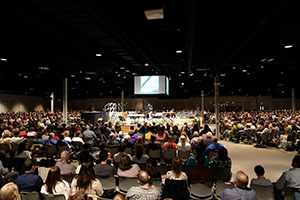
Of course, by the end of the novel, despite his best cautions, Leary’s travels—literal and metaphorical—have transformed him. Unavoidable frictions, discomforting inconsistencies, and most dramatically, unruly interactions with the locals have expanded his vision, widened his imagination, and opened in him a vein of sympathy strong enough to overcome his jealously guarded boundaries. Macon by no means becomes a different person, but he is most definitely changed.
Though the inner dynamics of Macon’s journey (and, I hasten to add for those of you who have read the book, its conclusion!) are very different than my own, the general shape of Tyler’s Accidental Tourist captures something of my own unintentional foray into ecumenical inquiry, my own journey as an “accidental ecumenist.”
Over the years I was researching and writing The Visual Arts in the Worshiping Church, I recognized that it was different than my previous research projects. I knew that I was being pushed, pulled, and tested as a person more than had been the case before, but until recently I’d not consciously considered the meaning of those experiences. It turns out those experiences provided me with insights and rewards I would not have found on a more familiar path. They also illustrate some of the possible dynamics of receptive ecumenism as they might play out within the varied and particular Christian college and university settings.
Becoming an Accidental Ecumenist
At the outset of my research for The Visual Arts in the Worshiping Church, I did not see any need to venture beyond “home” in order to pursue my questions. That is to say, I wasn’t intending to venture beyond Protestant congregations. Wasn’t the distance between an art-committed congregation like Mars Hill in Grandville, Michigan—a stand-alone, evangelical quasi-megachurch led at that time by Rob Bell—and an art-committed congregation like St. Gregory of Nyssa Episcopal in San Francisco—“an intentionally experimental congregation that would press the liturgical limits of the Episcopal Church’s new Book of Common Prayer”[2] —wasn’t that distance enough? It seemed to me there was enough historical, confessional, and theological variety among Protestant congregations to adequately explore my initial hypothesis.
I had embarked on this project hypothesizing that theological identity and confessional commitment inflected how the visual arts are used and received in congregational settings. I was inspired by Richard Hughes’ and William Adrian’s book, Models of Christian Higher Education. Reading that book early in my academic career proved very formative for me, helping me appreciate the internal logic of different Christian educational visions shaped by varied theological and confessional commitments. Although they are all within the Protestant tradition, Methodists, Anabaptists, Lutherans, and Calvinists will, as a consequence of their confessional and theological differences, build different kinds of colleges—each with its own kind of integrity. So, I transposed Hughes and Adrian’s method from Models of Christian Higher Education to an inquiry into how churches use the arts—hoping to discover and map a parallel world of confessionally informative difference.
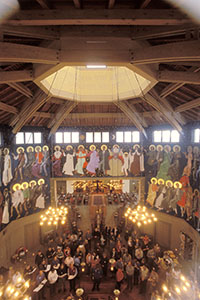
Over the course of three years, I built up a list of a few hundred contacts in more than twenty-five denominations and church associations who could tell me what was going on with the visual arts in their bailiwicks. But after much surveying, conversing, researching, and reading, it became clear my hypothesis was not panning out. Among my sample, at least, confessional identity was the least determinative factor in what might be happening in any art-committed Protestant congregation. Get folks from a stand-alone, internet-savvy evangelical church like Mars Hill to explain their reasons for their engagement with art, and it turns out they sound just like the folks from icon-commissioning St. Gregory of Nyssa. Ecclesially and confessionally, not to mention politically and culturally, these congregations are profoundly different. Yet I found the same theological and doctrinal language in circulation to justify and explain their engagement with art. I heard talk about the doctrine of creation; talk about about human creativity as a reflection of the imago dei. I heard about culture and witness. I heard about their ministry to their local communities. Where I expected to find confessionally informed difference, I found a confusing uniformity. On top of that, it also became clear that there I was not finding any stable patterns in the kinds of artistic activity that might characterize any given confessional community. A United Methodist church might have very similar programming to Mars Hill; Presbyterian churches might be commissioning and using icons. Church-based art galleries are ubiquitous—though pressed to a number of different ends. This was not going well at all.
Gradually, two new and more interesting questions came into focus. There was more in common across art-committed Protestant congregations than I’d imagined. But what, exactly, did they have in common? Second, there remained, nonetheless, clear and significant differences in practice for which I needed to give account. If those differences were not coming from theological commitments or confessional identity, where were they coming from?
That’s when I realized I needed to leave “home.” If I wanted answers to these new questions, I needed more context. To consider the significance of the similarity I’d discovered in Protestant environments, I needed to test it against how Catholic and Orthodox Christians talked about artistic activity in their congregations. And in order to account for the wide range of art on the ground in art-committed Protestant congregations, I needed to shift my focus from confessional and theological rationales to the assumptions, patterns, practices, and structures that resulted in actual works of art. This was where my accidental ecumenism began.
The View from There
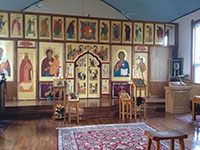
The best sort of research takes researchers to unexpected places. These unexpected places are often challenging—maybe energizing and inspiring, or daunting, or frustrating. Most of the time, this research remains purely academic. Sometimes, though, the emerging argument can start making demands on one’s character. It can do something to you as a scholar, a person, a Christian.
Having stumbled my way toward a new set of questions that forced me outside my initial parochial confines, what could I see now that I hadn’t seen before? What accounted for the striking similarities in how Protestants talked about the arts in congregational life, even as the kinds of artistic objects and activities they might support ranged from websites to icons, from summer art camps to juried exhibitions, from planning elaborate installations in support of a sermon series to collecting museum-quality works of art?
In a nutshell, here’s what I learned: what happens with the arts in Protestant settings has virtually nothing to do with theological or confessional commitments. What happens with the arts in Protestant settings has almost everything to do with the norms and values of our larger North American art system. This discovery accounts for the similar rationales I heard for sustained involvement in the arts. Everyone was speaking the same “art system” dialect, lightly baptized with a sprinkling of doctrinal or biblical language: for instance, as God is clearly creative, and as we are made in the image of God…we too are creative and that gift should be received by the church. Also: the art world at large values originality, individuality, and expression and, in the guise of honoring the doctrine of creation and the imago dei, so do Protestant congregations.
Note that the creation/imago dei rationale for the arts gives permission. It does not give direction or destination. This insight helped unlock my second question—how to explain the diversity of objects, activities, and practices on the ground. That too, it turns out, has its roots in various parts of our North American art system: what happens in a Protestant congregation depends entirely on who establishes the program. Is it a K-12 art educator who values participation? A graphic designer who values elegant clarity? An architect who values the integrity of the worship environment? Someone with an MFA perhaps, who values imagery that is allusive, open-ended, and often challenging?
The diversity on the ground in Protestant congregations is drawn entirely from the diversity of art worlds that make up our North American art system. Educators, designers, architects, and MFAs, while all part of our larger North American art system, nonetheless inhabit different worlds within that system. While they share some fundamental commitments (individuality, originality, expression), they inflect them differently. They in turn, import the assumptions, standards, and practices of their guilds (often without critical reflection) directly into their churches. Not incidentally, this accounts for much of the difficulty that art initiatives can encounter—when a program envisioned by an MFA runs up against the sensibilities of a K-12 teacher, or the vision of an architect runs up against the assumptions of the graphic designer, there is likely to be trouble. These gifted and dedicated folks are left to hash things out on their own, with very few institutional guidelines or structures to help direct the outcome.
The dominance of art-system assumptions is so ingrained in Protestant practice that it is all but invisible without a foil—in this case, the foil of Orthodox and Catholic practice. Orthodox and Catholic congregations may initially use similar doctrinal language (creation, incarnation, sacramentality) to justify their use of visual art, but very soon, the language becomes concretely ecclesial: it’s what church tradition upholds or even demands; art supports and interprets the action of the liturgy; art is a powerful mnemonic for the Christian story. Art teaches and encourages believers. In all these formulations, art is clearly licit, but, in the context of worship and congregational life, it is subservient to the church’s larger purposes. For Orthodox and Catholics, art, when it enters the church, can never become an end in itself.
The first half of my project, then, involved discerning and describing the assumptions, practices, and patterns that guide artistic activity in Orthodox, Catholic, and Protestant congregations. Subsequently, a series of six smaller, though no less interesting, questions emerged. I’ll touch on just two here: first, the question of how using the arts tends to underscore the universal or local character of the church; second, how the arts mediate the relationship between corporate worship and individual devotion.
The need to understand one’s church as both universal and local is, as Gordon Lathrop calls it, an “essential tension.” The Church is always local: “it has no other existence….it is always a local gathering of people with their leaders, around the Scriptures and the sacraments, knowing Christ risen and here” (emphasis is Lathrop’s). Yet the Church is also always universal, “in communion with all the churches of Christ, in every time and every place, and that what it celebrates is a Gospel which has universal significance…”[3] Though all Christians acknowledge this truth in theory, in reality, our everyday, operative ecclesiologies tend to foreground one of these identities, rendering the other as background.
Orthodox icons represent the strongest example of the using art to underscore the universality of the church. Though there are small variations, the visual vocabulary of icons has remained remarkably stable throughout the centuries because the “look” of the church is a reflection of heaven. It is independent of historical era or geographic region.[4] As one Orthodox scholar put it, “How can you remodel the heavenly city?”[5]
In the Catholic Church, post-Vatican II practice allows for more stylistic variation but supports the work of the arts in congregational life through a clear set of structures and procedures. These are found in Environment and Art in Catholic Worship (1978) and Built of Living Stones (2000), two documents published by the United States Conference of Catholic Bishops, and through diocesan liturgical committees, as well as in the growing profession of liturgical consulting. These structures and processes subordinate art to the purposes of the liturgy—which is understood to be universal. There’s ample room for creativity, but much less for the kind of individual self-expression assumed as a norm in our wider art system. The integrity and universality of liturgical action is paramount; any art that interferes or competes with it is inappropriate for church use.
In most Protestant settings, by way of contrast, little explicit thought goes into how the arts might underscore the universality of the church. The visual arts, as they show up in Protestant settings, tend to represent the congregation, or a group in the congregation, or an element of the local community, or an aspect of ministry. The arts underscore the concerns and identity of the local congregation.[6]
My argument here is not that some of these practices are more legitimate than others. It’s simply that we might want to become more self-aware. We should notice what the arts are doing, what they are reinforcing and underscoring in congregational life. Then we should pause to consider if that’s what we want them do. Or if that’s all that we want them to do. That goes for Orthodox and Catholics, too. There are consequences for the choices that we all make. For the most part, though, we are oblivious to the reality that we are making choices in the first place, and that’s a situation we might want to correct.
The second question—that of corporate worship and private devotion—turned out to be one of the most interesting themes to emerge from my accidental ecumenism. Most of us engage regularly in individual or family devotional practices. I’d never before, however, had cause to note the degree to which the visual arts mediate the relationship between private devotion and corporate worship (or not, or problematically so, in the case of some Protestants). Generally speaking, for Orthodox and Catholics, the best sort of individual devotion feels like, looks like, sounds like, and moves like Sunday worship. Images, prayers, even physical actions are often drawn from the Sunday liturgy. For many Protestants, it’s the other way around: the most meaningful public worship looks like, feels like, and works like the best private devotional experience. This is often mediated by singing.
This issue caught my attention because my institution, Westmont College, is not affiliated with any denomination or association of churches. We are generically Protestant, multi-denominational, with a handful of Orthodox and a growing number of Catholic students, currently about ten percent of our student body. One of our challenges as an independent Christian college is to help students understand the Church, both theologically and institutionally, and then commit to it as more than something that meets their devotional needs. But if our shared worship on campus is assumed to be, and orchestrated to feel like, look like, sound like, and position us as individual devotees engaged in what I call “simultaneous, individual, private devotion,” then I’d really like us to take a page from the Vatican II playbook and start thinking of our shared worship as a corporate, communal activity that demands our “full, conscious, and active, participation.” For Catholics, the key words in that iconic phrase might be “full, conscious, and active.” For some Protestants, however, I think the key word is “participation,” a joyous embrace of the reality that when we join together in worship, we are more than the sum of our parts, we are more than a collection of individuals. We are being made into a people, into a communion, into the witness bearing body of Christ.
There’s much more I could say about the content of the project, but this gives you some sense for the kinds of questions and learning that resulted as a consequence of my accidental ecumenism. I’d like to turn now to a less conventional discussion: What it felt like to undertake this journey.
As I mentioned, this project turned out to be pushy. I’d never before pursued a research project that leveled serious challenges to who I thought I was and how I thought I should behave. I recognized this as it was happening—most of us are self-aware enough to understand when we are holding up (or not) under what we feel to be trying circumstances. In retrospect, I can see that my accidental ecumenism wasn’t only for the benefit of the research. It also benefitted me as a person, exposing for examination aspects of my character that are not always in play in my academic life. Three stories in particular illustrate this. And although I’m not an expert in ecumenical dialogue, they do raise relevant questions that I think might be a place to start.
Story One: Encountering Identity Threat
Part of my research involved interviews. I talked with artists, clergy, congregational art committee members, and denominational staff. In some interviews, I found myself consistently feeling on the defensive. I was being told implicitly—and more than once very explicitly—that I, my church, and my theological tradition have got it all wrong.
My particular corner of the Christian world, the Christian Reformed community, often has a very robust theological sense of self. We’ve got a respectable intellectual heritage, an effective and influential theological vocabulary, and a list of well-known scholars and preachers and teachers. False humility is not one of our problems. (Adequate humility may be!) Not surprisingly, then, it turns out that I don’t respond all that well to being told that I, my church, and my theological tradition have got it all wrong.
When it happened I found myself thinking, “Hey, outsider! Who are you to be so critical of my tribe?” Except that, at this moment, sitting in your office, asking for your time, I am the outsider, asking you to answer my questions, and in order for you to answer my questions, you pretty much have to describe the historical junctures where your tribe and my tribe parted ways. That brings with it a value judgment about what constitutes the true path, and what represents a grievous deviation from that path. My interviewees were only doing what I’d asked.
Some of those interviews were deeply discombobulating. While I wasn’t noticing, a conversation about art had subtly morphed into a conversation about identity. The “help me understand” element of the interview, question by question and response by response, would transform into a “you’re wrong; I’m right” apologetic. To be fair to myself, it takes two to tango. When my interviewees could stick to the “help me understand” track, I could too. But when they headed off into normative judgment territory, it was hard for me not to follow them right down that road. I remained calm and polite on the outside, but on the inside I was irritated at best, dismissive at worst. Ouch.
In a lovely essay titled, “Receptive Ecumenism, Ecclesial Learning, and the ‘Tribe,’” James Sweeney describes the tribal complexities that can emerge in ecumenical encounters. On the one hand, he writes, for anthropologists, “tribe is a virtuous term: a social grouping at a certain stage of economic and cultural development with a clearly delineated identity; a distinct people with its own special characteristics and history; a coordinated system of mythical beliefs and practices; the repository of cultural values and artefacts.”[7] On the other hand,
Ecumenical learning from ‘the other’ clearly involves very complex transactions when ‘the other’ represents those with whom one has been locked in conflict and over against whom one’s ecclesial identity has been forged.…[T]here are historic resentments, sometimes unacknowledged, sometimes repressed. It is hardly surprising if the praxis and spiritual attitude of ecumenical learning are rare. An eirenic willingness to learn from the other may be an easy habit for the academic mind, but it it’s not the norm of everyday life.”[8]
In the interactions I just described, what began as “an eirenic willingness to learn from the other” ended up colliding with “conflicts over against which ecclesial identities had been forged.
Given our frailties and faults as particular, embodied individuals, the slippage from irenic encounter to identity threat is probably inevitable. Those of us who teach have probably witnessed or been party to such slippage on our own campuses or in our own classrooms. Add to that the varied levels of ecclesial self-awareness and maturity among our students (and perhaps among ourselves as well), and might it even be a bit presumptuous to assume that “an eirenic willingness to learn from the other” is “an easy habit for the academic mind”! It’s not that polemic is always inappropriate, or that apologetics are off the table. But they are different dialogical modes, and much more familiar and habitual for academics. Are we sufficiently able to model what “irenic willingness to learn” looks like in action? Are there forums or venues where we can practice “irenic encounter” and learn to bracket the kind of anxieties that lead to identity threat, and the rhetorical moves that lead to polemic? Imagine that we actually become practiced at “irenic encounter.” What benefits might that have for all sorts of other learning that needs to happen on our campuses?
Story Two: Behaving Badly on Good Friday
Midway through my research I had one experience that haunts me to this day. It was the most extreme of instances where I found myself objecting profoundly to what I saw being offered in the name of worship. This type of experience was more of an issue when examining the practices of my own tribe, where I felt an enfranchised permission to be critical. But exactly how much criticism or irritation or even outrage (I’d like to imagine it was righteous outrage), is permissible?
This particular instance involved a visit to a highly regarded, art-committed congregation in Southern California on Good Friday. The service was indeed artistically engaged, but engaged in a way that I found sickeningly inappropriate. This was the worst of a handful of upsetting experiences I encountered in the course of my research—upsetting not just because of what I saw, but because of how I reacted to what saw. These are my fellow Christians. These are my brothers and sisters in Christ. They care about art; I care about art. They are my allies in this project. And yet they did THAT! How could they?!
Such experiences were meta-upsetting. It was profoundly distressing to find myself responding not just intellectually, but vehemently, viscerally, and, it felt, with intemperate criticism. This wasn’t identity threat. My reaction wasn’t about protecting or explaining myself. It was simply a strong sense of disgust. And the intensity of that disgust was disorienting and troubling.
In trying to make sense of these experiences, I found Margret O’Gara’s typology of ecumenical gifts helpful. O’Gara characterizes ecumenical dialogue as a kind of gift exchange. She describes one exchange as “differentiated consensus” (the Lutheran/Catholic Joint Declaration on the Doctrine of Justification, for example), another as “corrective balance” (the Anglican/Catholic Commission on Eucharistic Doctrine, for example) and a third as pure “gift exchange” (the Mennonite/Catholic “Bridgefolk” movement, for example). She also considers “the gift offered but not received.” “[O]ne gift offered in the ecumenical gift exchange” she writes, “is serious criticism.”[9]
“Serious criticism” might be a virtuous version of the “failed attempt at irenic encounter” in my first story. But in order to qualify, serious criticism cannot be simple grandstanding for one’s own status quo. The best serious criticism, it seems to me, is that which emerges from irenic encounter. Having earnestly sought to understand, having learned from the best representatives of the other tradition, and having thought through the implications of that learning for our own tribe—well then, perhaps at that point, we might have a worthy question to pose. Importantly, my critical reaction to that particular Good Friday service was itself rooted my ecumenical learning. The questions I would have posed to the leadership of that church, had they invited me to converse with them, were informed by learning about the how the arts work across the entire Christian spectrum. I won’t return to that particular congregation—and the leadership there has changed, and that particular service was a never-to-be repeated, one-off event. But O’Gara’s discussion of ecumenical gift exchange has helped me make sense of that experience, and has encouraged me take heart that perhaps my strong reaction was not just judgmental and uncharitable, but may have included some ecumenically informed “serious criticism.” I’ll continue to ponder that. I’ll also continue to ponder how we, at Westmont, might create venues, forums, and exercises that build on irenic encounters so as to rightly and constructively entertain serious criticism.
Story Three: Discovering Kindred Spirits
Happily, the experiential component of my accidental ecumenism also yielded encounters that were discombobulating in a good way—encounters so wonderfully illuminating, that only in retrospect can I see that they were also, initially, a little disorienting.
I have to credit much of my learning, and quite a few insights, to two people. The first is Bob, an architect. Bob works in Grand Rapids, Michigan, where he designed all kinds of buildings, including churches and Catholic-school chapels. Bob is a busy guy, but he was happy to receive me in his studio and answer my questions. What I remember so vividly was Bob’s infectious love for God, for God’s church, and for his own work as an architect. You could not talk with this man and not be drawn in to the world he loves so much. Book after book came down off his shelves. Blueprint after blueprint, excavated from his files. Address after address hastily scribbled down—places for me to visit to see good Catholic design in brick and mortar. As I listened to him, I began to realize, with some shame, that the Grand Rapids I’d known growing up was much bigger than I’d imagined. It was filled with Catholics like Bob, who lived and breathed and ate “church” just like my own Christian Reformed community did. Of course, I knew intellectually there was a large Catholic community in Grand Rapids. I’d pass Immaculate Heart of Mary Catholic Church and school every day. And it goes without saying that “some of my best friends were Catholic.” But here, in the person of Bob, I saw for the first time the depth and richness of this whole parallel world of energetic, joyful, faithful Christians, there all along, but beyond my limited sight. My faith was truly transformed in that meeting. I drive through Grand Rapids now—and any city, for that matter—with different eyes. I only regret that it didn’t happen sooner.
The second person is Darya, the wife of the priest of the small Russian Orthodox congregation outside Grand Rapids. She’s also the congregation’s iconographer, having painted all the icons for their iconostasis. I recall, with equally vivid pleasure, the two of us sitting on either side of Darya’s worktable in the cool of the yellow-painted, cinder block basement of St. Herman’s—a basement that smelled of damp cement, cleaning fluid, varnish, and just a hint of mildew—as ecclesial a scent, in my opinion, as incense.
Darya is a born teacher. She invited me into her world and showed me around, finding apt analogies and metaphors that helped me better understand the internal logic of Orthodoxy. She was infinitely gentle and patient with my sometimes obtuse, incessant questions. I also discovered that Darya loves the history of art and that she had studied under a very prominent art historian when she was an undergraduate at Wellesley. She shared with me that she had long been called to pray for this professor, even after all these years, because when she was his student, she thought him so religiously open and curious. Her comment brought me up short. I’ve rarely prayed for my non-Christian academic colleagues, except if they or one of their loved ones was sick. Praying for the souls of my non-Christian academic friends seemed presumptuous. It hadn’t crossed my mind as something I could do, as something I should do.
But here’s the weird thing about that exchange. I’d just met the object of Darya’s prayers. We’d recently had him out to Westmont for our annual Conversation on the Liberal Arts. He was indeed an impressive scholar, and more than that, an excellent person. Sometimes the big-name scholars we invite to this event play their role perfunctorily, arriving in time for their session and departing as soon as it wraps up. Darya’s professor, however, didn’t just stay for the entire gathering, he wrote an entirely new paper just for our purposes and participated eagerly in all the breakout sessions and small-group discussions. Over dinner, I discovered the same curiosity and openness about religion in his questions about Westmont and Westmont students that Darya had sensed many years ago in his classroom. I encouraged Darya to keep praying. And I began to wonder about my own habits of prayer and petition. If Bob challenged and expanded my experience of my Christian community, Darya rattled my sense of my relationship to my professional peers.
Both James Sweeney and Margaret O’Gara shed light on what went right in these two encounters—Sweeney emphasizing healthy identity, and O’Gara emphasizing healthy academic practice. Sweeney discusses what he calls “steady state identity.” “Selfhood” he writes,
is acquired by repeated engagement from within the determined frame which reinforces communal beliefs and values. … at the same time, variations are explored renewing and extending the frame, and in this way learning occurs. “Steady state” is a balance between stability and openness, neither over-determined by the frame nor destabilized by external influences.[10]
With Bob and with Darya, I encountered fellow Christians working out of that confident, mature, steady state, which allowed me in turn to remain in my steady state: none of us over-determined by our positions, nor threatened by questions or different perspectives.
When we are grounded in our “steady state,” other good things can happen. “Real ecumenical collaboration calls for willingness to enter into relationships, to risk vulnerability for the sake of the common effort, and to refuse competition as an acceptable mode for serious inquiry,” O’Gara writes. “[E]cumenical work only proceeds when competition is eschewed. … ecumenical research actually serves as a countercultural model within academic circles, recalling scholars to an earlier ideal of being truly a college together.”[11]
Learning and Ecumenical Learning
What all these encounters share, whether pleasantly discombobulating or otherwise, is a dynamic of disorientation, sometimes followed by the experience of re-orientation. I’m reminded of Walter Bruggeman’s work on the Psalms, where he points to Psalms that express a profound sense of orientation, of settled, shared identity; and to Psalms of lament and penitence that capture the anger, fear, and dissonance of disorientation; and finally, Psalms that look back and, through thanksgiving and praise, speak to a new, revised orientation, a deeper appreciation for God’s faithfulness, and a renewed commitment to covenantal trust. I’m reminded of the deeply emotional, psychological, and social aspects of maturing in faith.
I’m also reminded of what I see happening in my classroom every year and what I see in the lives of individual students over the course of their time in college—the emotionally laden, psychologically and socially complex encounters with staff and faculty, with course material, and with peers. These encounters that disturb, re-arrange, and then (we pray) reconstitute an enlarged and deepened person, with a greater capacity to understand, to know, and to love neighbor and self. Some of that learning is already and inevitably ecumenical. But what might we learn, what might we learn about learning, and what might we accomplish if we committed to more formal and programmatic approaches to ecumenical learning?
As an accidental ecumenist, I am hardly the expert on these questions. But I hope our collective wisdom will help us consider what learning in general shares with specifically ecumenical learning. We might ponder what types of ecumenical learning might best suit our own contexts, and the extent to which more intentional engagement with ecumenical learning could help deepen and strengthen not just student learning, but also the work and witness of our colleges and universities.
Lisa DeBoer is professor of art at Westmont College in Santa Barbara, California. This essay is adapted from her plenary address for the National Conference of the Lilly Fellows Program in Humanities and the Arts at Hope College on October 12, 2018.
[1] Anne Tyler, The Accidental Tourist (New York: Knopf, 1985), 10.
[2] Paul Fromberg, The Art of Transformation (New York: Church Publishing, 2017) as cited at Saint Gregory of Nyssa Episcopal Church, "St. Gregory's History," www.saintgregorys.org/st-gregorys-history.html.
[3] Gordon Lathrop, “Worship: Local yet Universal,” in Christian Worship: Unity in Cultural Diversity, ed. Anita Stauffer (Geneva: Lutheran World Federation, 1996), 48-49.
[4] Some “westernized” Russian icons of the seventeenth to nineteenth centuries being the exceptions that prove the rule, an exception generally now labeled deviant.
[5] Peter Galadza, “Restoring the Icon: Reflections on the Reform of Byzantine Worship,” Worship 63 (1991): 242.
[6] Exceptions to this do exist, and those are the congregations who've taken their cues from the Catholic Church, via the ecumenical movement. They've typically embraced art as a companion to the Revised Common Lectionary and observation of the liturgical year. But among art-committed Protestant congregations, this is a minority report.
[7] James Sweeney, “Receptive Ecumenism, Ecclesical Learning, and the 'Tribe,''” Receptive Ecumenism and the Call to Catholic Learning: Exploring a Way for Contemporary Ecumenism,eds. Paul D. Murray and Luca Badini-Confalonieri (New York: Oxford University Press, 2008), 334.
[8] Sweeney, “Ecclesical Learning, and the 'Tribe,''” 337.
[9] Margaret O'Gara, "Receiving Gifts in Ecumenical Dialogue," in Receptive Ecumenism and the Call to Catholic Learning: Exploring a Way for Contemporary Ecumenism, eds. Paul D. Murray and Luca Badini-Confalonieri (New York: Oxford University Press, 2008), 30.
[10] Sweeney, “Ecclesical Learning, and the 'Tribe,''” 336.
[11] O'Gara, “Receiving Gifts in Ecumenical Dialogue,” 33.


